Look at this mess of a back yard we inherited:
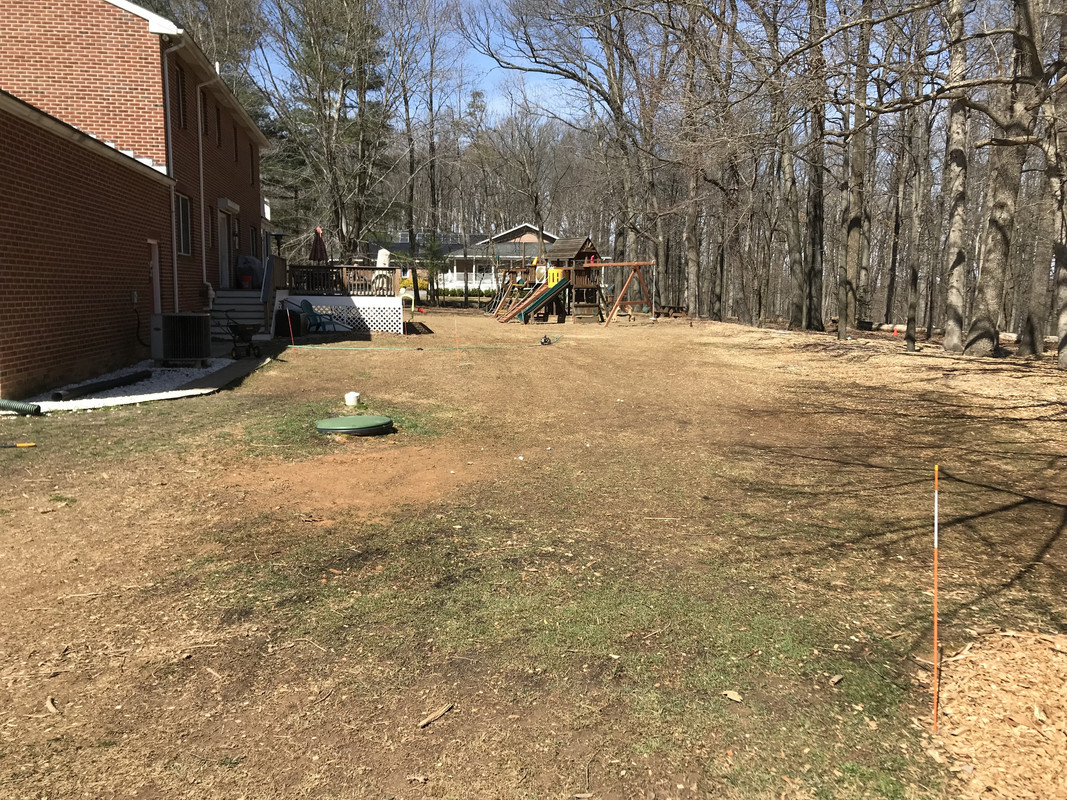
Granted that's a winter picture, but trust me it was a potpourri of weeds, and exclusively weeds. Here is the after:

The basics: I'm in the transition zone, in a pocket of 6b surrounded by 7a. No irrigation system. For this 10,000 sq. ft. renovation I used Top Choice TTTF from Mountain View Seeds. This year, the varieties were Raptor III, Titanium 2LS, and Valkyrie LS:
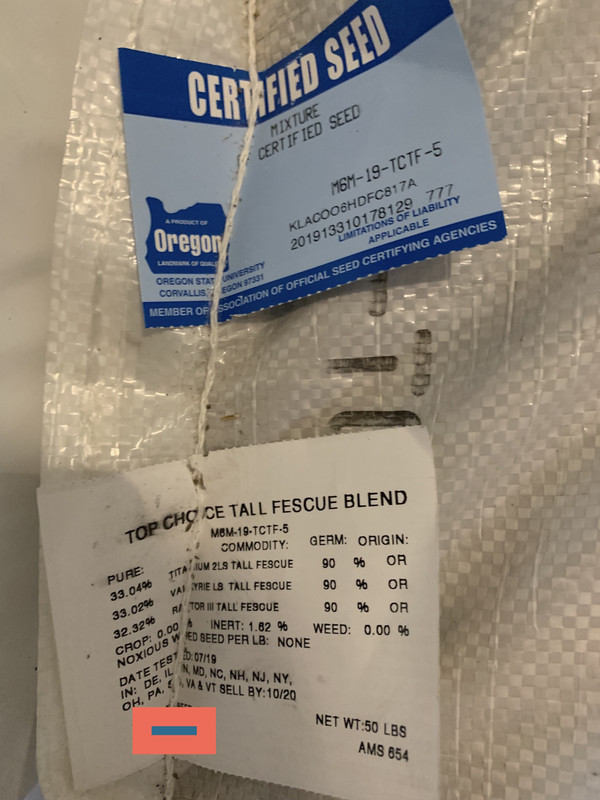
The first thing I had to do was address some the grade. This is what it would look like after anything more than a drizzle.

This was my first renovation, so to give myself time to prepare the soil and get used to the routine, I decided to do the grading in the Spring with temporary seed, then kill and renovate in the fall. Grading was hired out and done by a mini excavator. During lunch break I spread lime, 0-46-0, and 0-0-60 per my soil test, along with Milorganite and probably other amendments I'm forgetting. Then the contractor spread 10 yards of compost sourced from the local landfill mixed it in with a power rake.
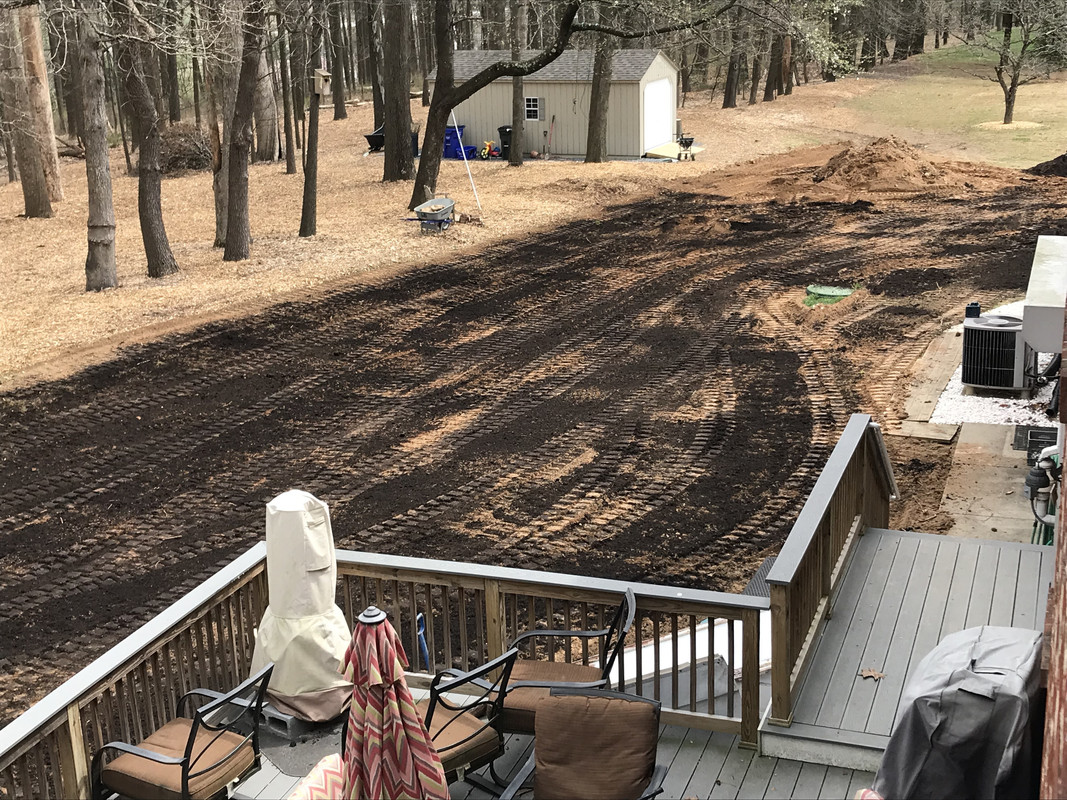
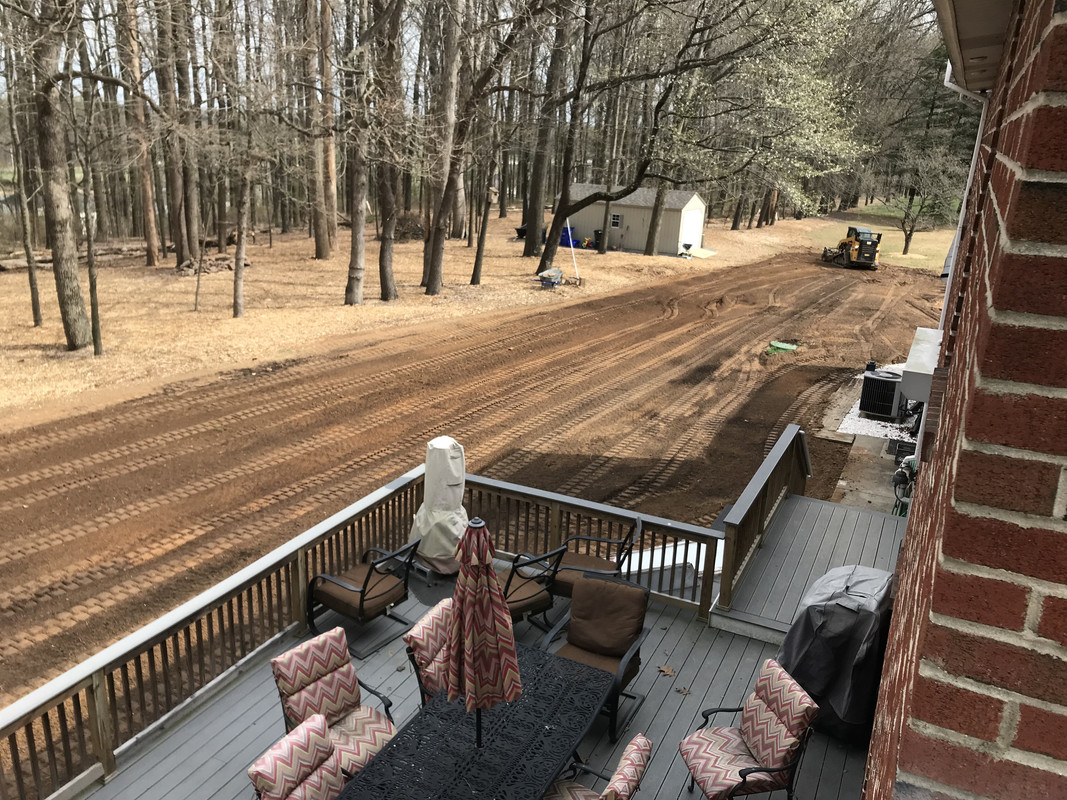
I recently inherited an old King Quad, so at the end of day 1 I went over everything with a drag mat to smooth it out and pick up what additional rocks I could.
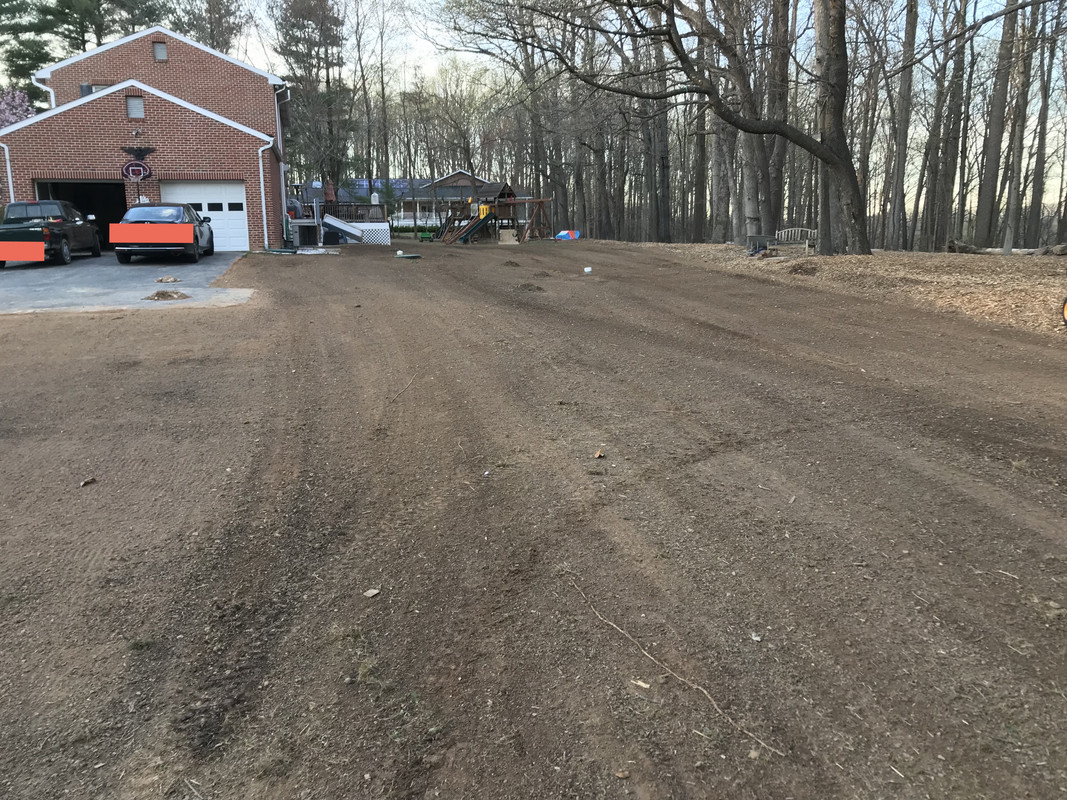
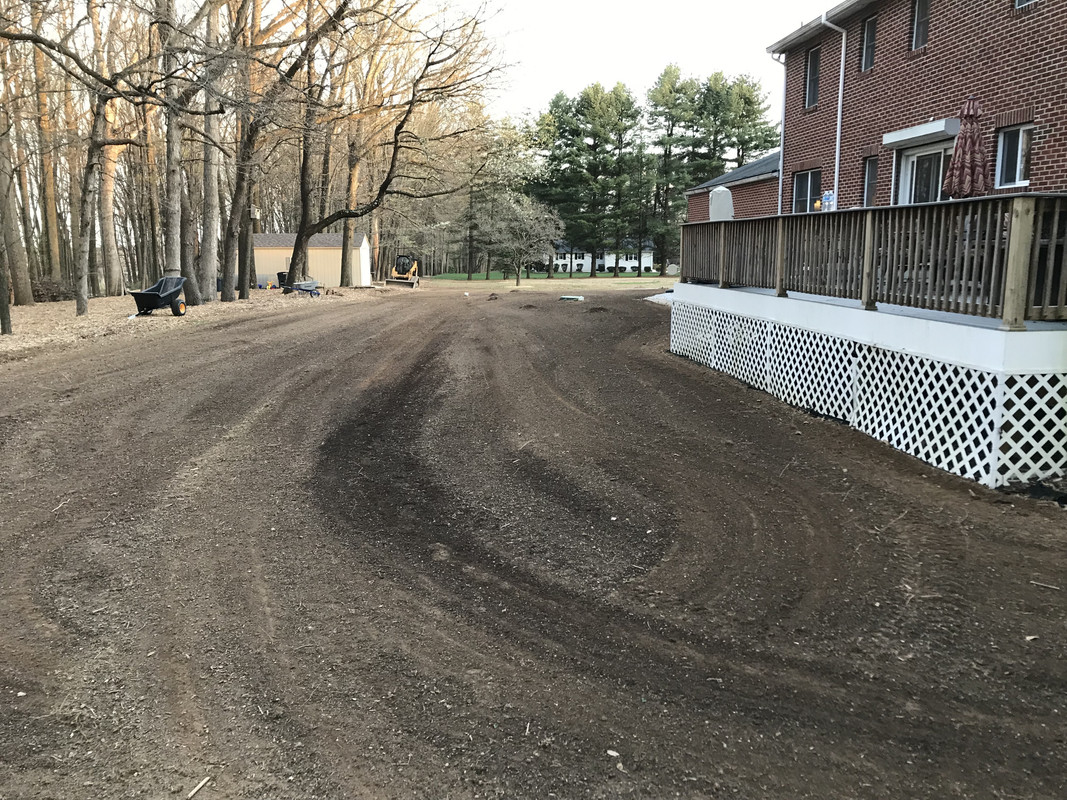
On day 2 my contractor spread Annual Rye and covered with straw - lot's of straw. Within a few days I had baby Rye popping up. By mid-May it was looking pretty good (that side lot is next year's project - also exclusively weeds).

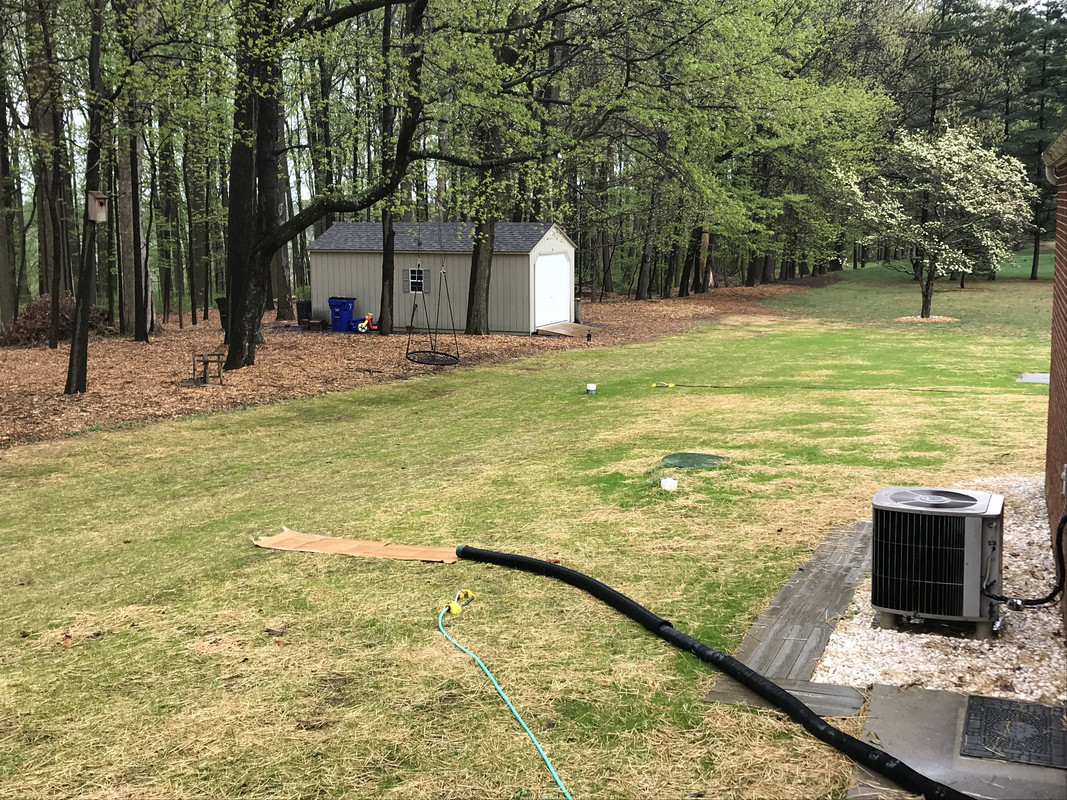
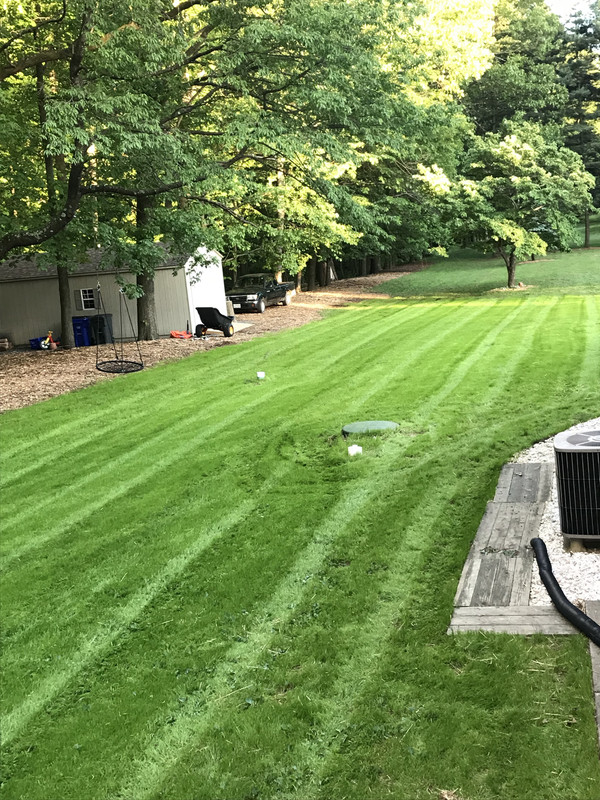
By mid-July it had mostly died off, except closest to the woods where it got a little more shade. So I had a fallow period of roughly 6-8 weeks. I hand picked weeds whenever I could, and sprayed Round-Up once per week.
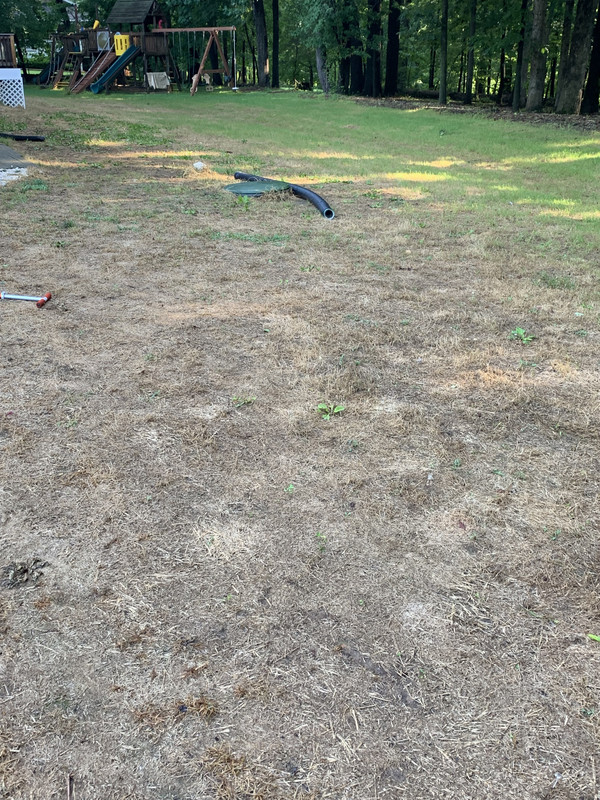
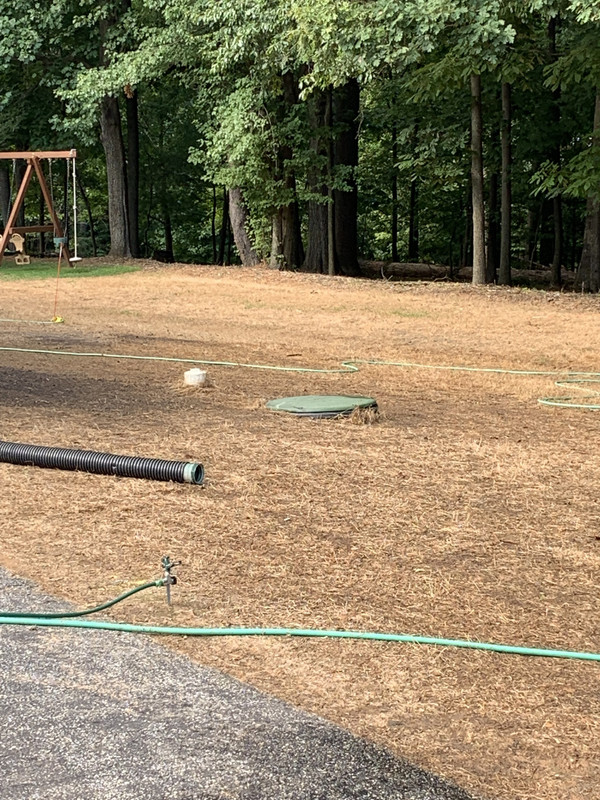
After several rounds of spot spraying and hand raking (as in, "my family thought I was crazy" several), I had a nice seedbed by the end of August. Also, around that time I rented an aerator, did a few passes, dropped some 10-10-10 and Milorganite, and smoothed it out with the drag mat and more hand raking.
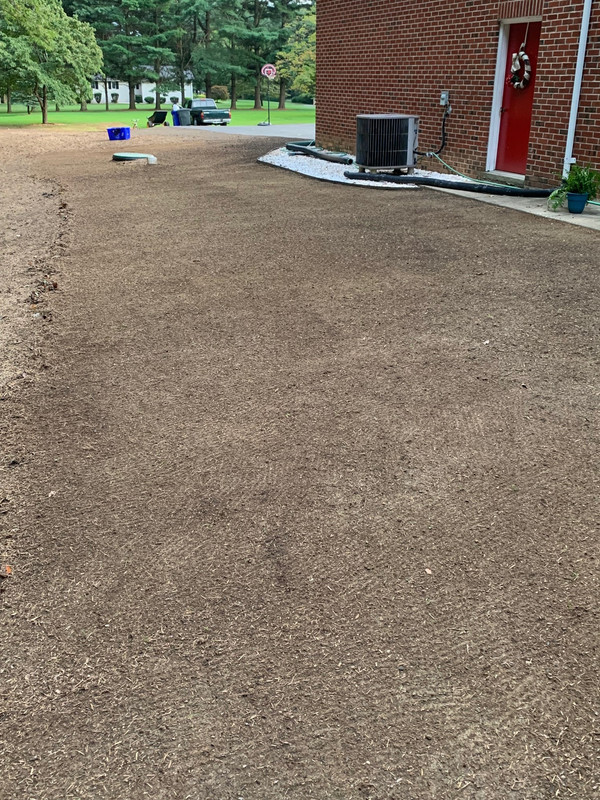
My local extension office recommends seeding between Sept. 15 - Oct. 15, but with my work schedule and family responsibilities I had to settle on Sept. 1. To preview the hell I was in for, here is the weather I had to contend with.
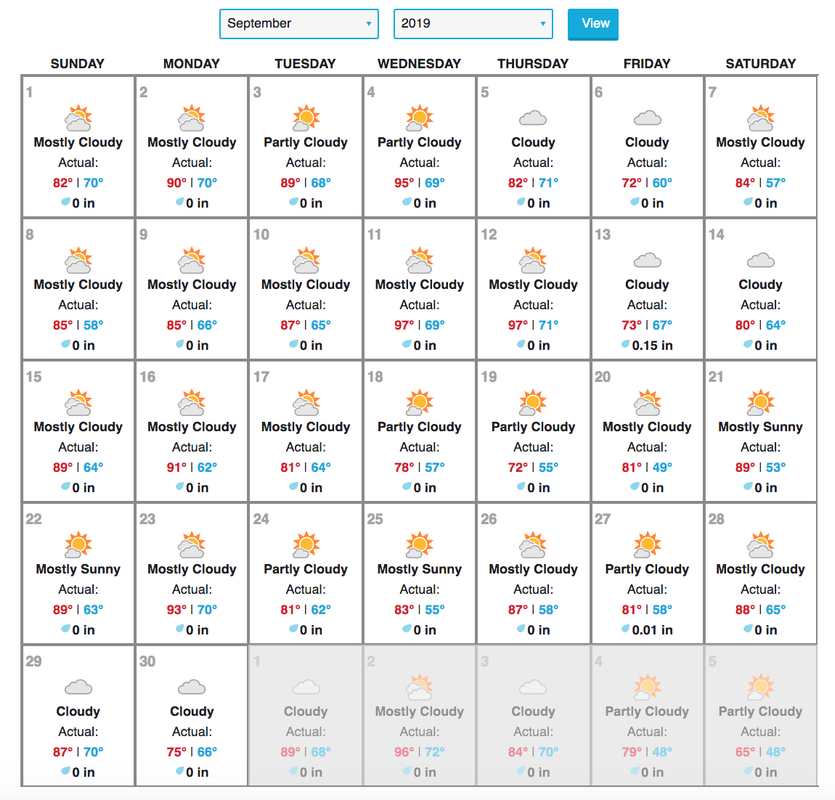

Those are more like August temperatures for my area. On top of that, I opted not to use a fungicide because I inoculated my seed with mycorrhizal fungi and I didn't want to take out the good with the bad. Had I known what was in store I probably would have done a few things differently.
Anyway, I seeded in two directions using my broadcast spreader, then went over it in two directions with a borrowed slit seeder.
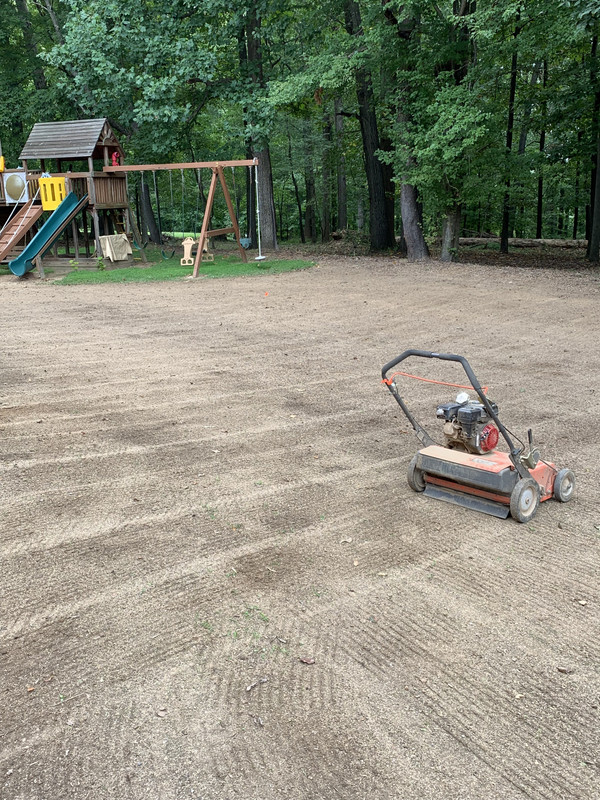
I used the max bag rate of 9#/M. I was worried about overcrowding, but with how the weather turned out 9 lb. was probably the perfect rate. For top dressing I used a combination of EZ-straw and Cover Grow, both spread by hand.
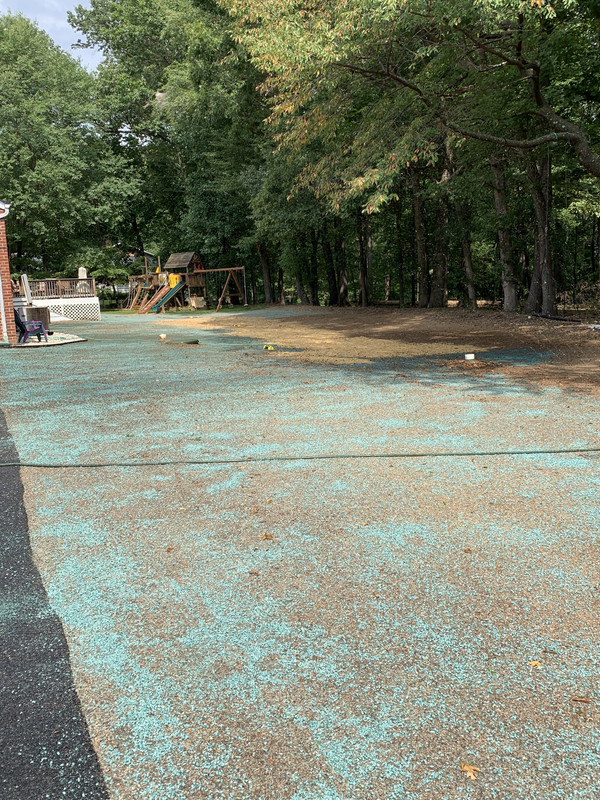
September 1 was a Sunday, September 2 was Labor Day, and September 3 I worked from home to tend the sprinklers. Even with a mad scientist setup of hoses, splitters, timers, and a mish-mash of sprinklers, because of the weather it was quite a chore to keep the seed moist. Then I had to be out of town from September 4 - 8! But, the timers and my Dad must have done a pretty good job, because when I got home germination had started (that was day 7).


Day 10
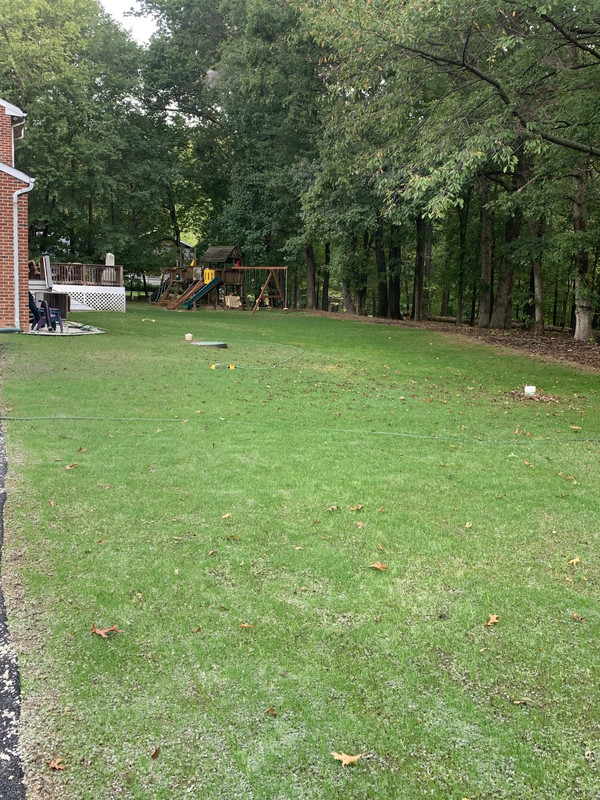

Day 14
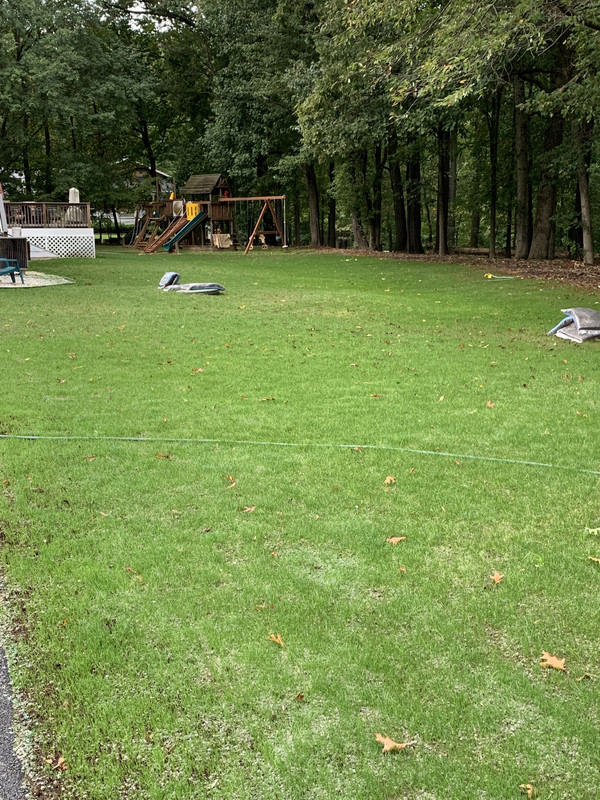
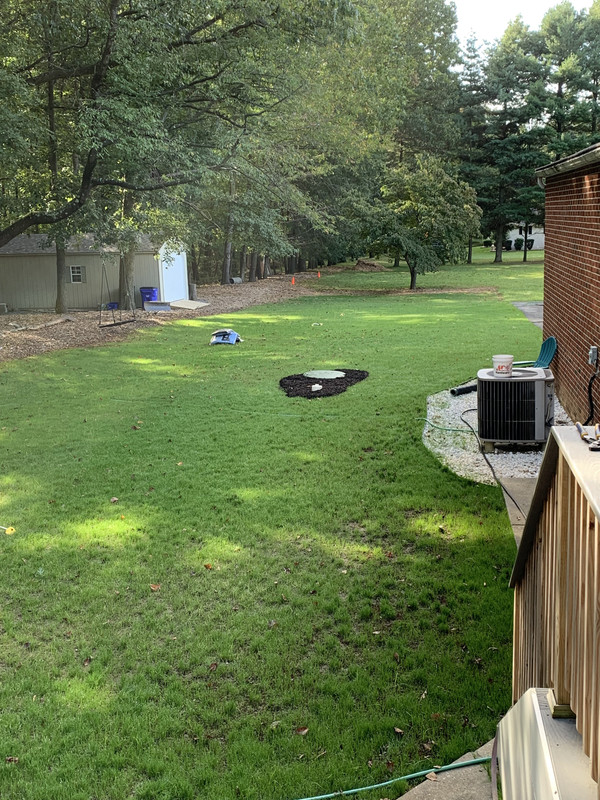
Day 16 is where I think I made a mistake. Dissatisfied with some bare spots, I threw down more seed and covered with leftover EZ-Straw. This meant that while I was starting to back off the watering schedule elsewhere, I still had to keep the newly seeded areas constantly moist. I tried to do that mostly by hand watering, but between the weather and work I had to use some timers too. That prevented established areas from drying completely. It didn't show up right away, but I'm convinced the additional seeding contributed to some fungus damage later on.
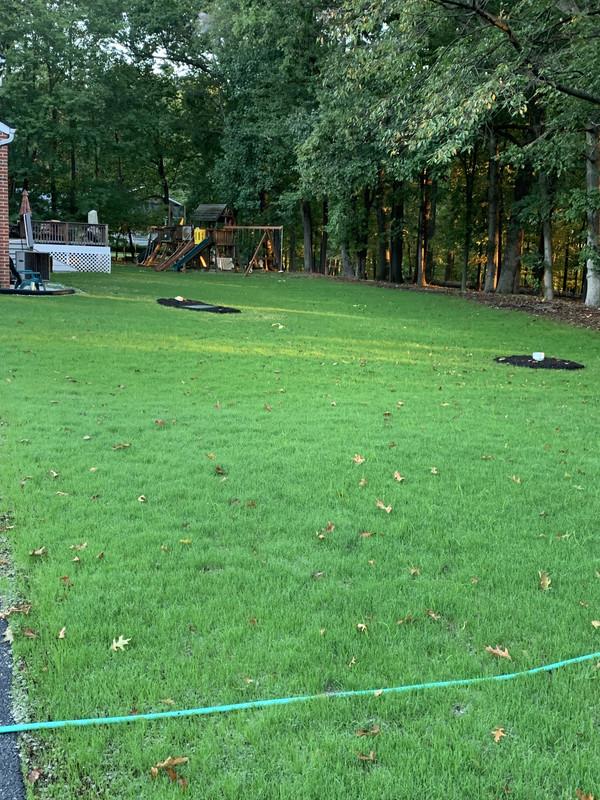
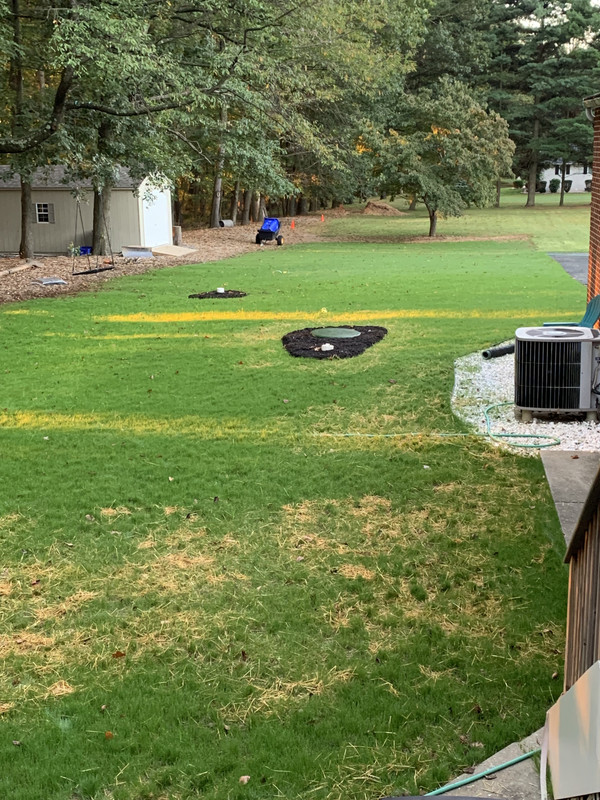
My first mow was on Day 20, and things were looking really good. After the mow I put down 0.2#/M of 18-24-12 (50% slow release) and some Milorganite at a rate I can't recall and didn't document. I also put down 1#/M Monty's Dri-Carbon granular humic acid. That's significantly higher than the bag rate, and that stuff ain't cheap, but I didn't think I could spread any lesser amount evenly with the tools I have (i.e., no sprayer).
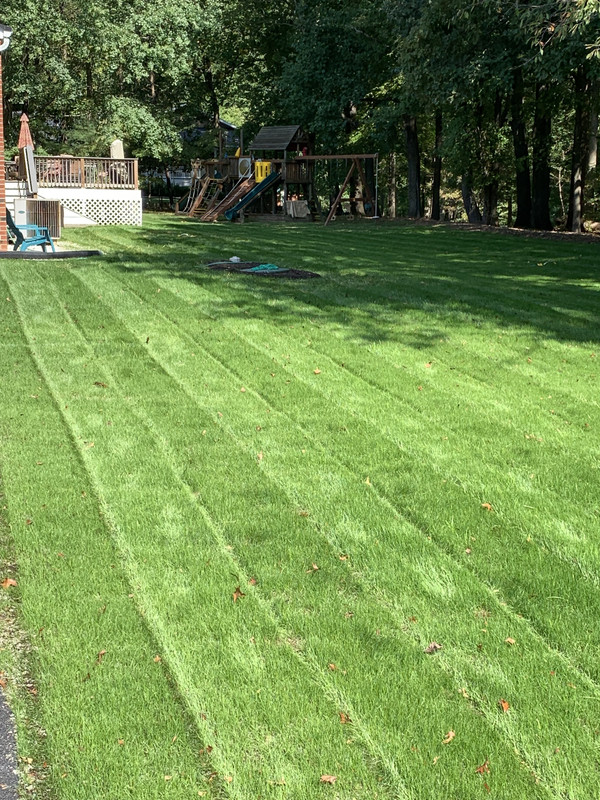
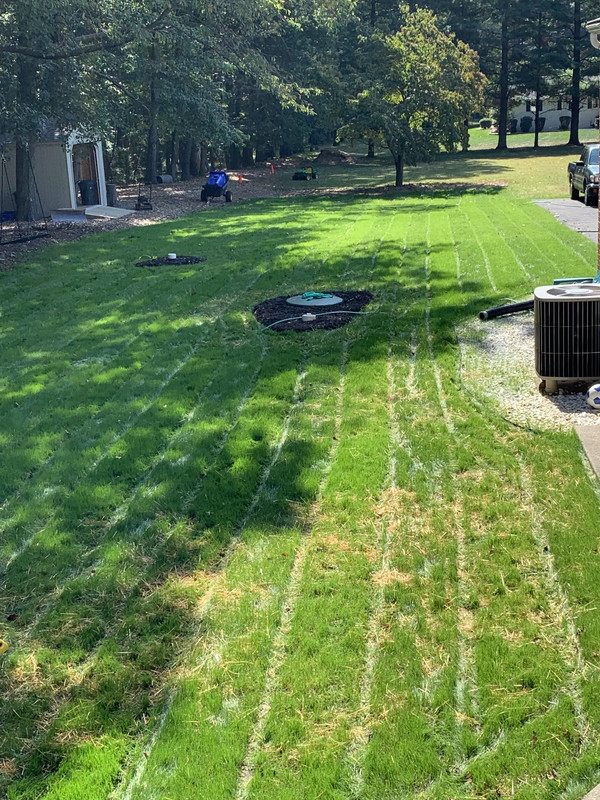
And on Day 23 it looked almost picturesque.

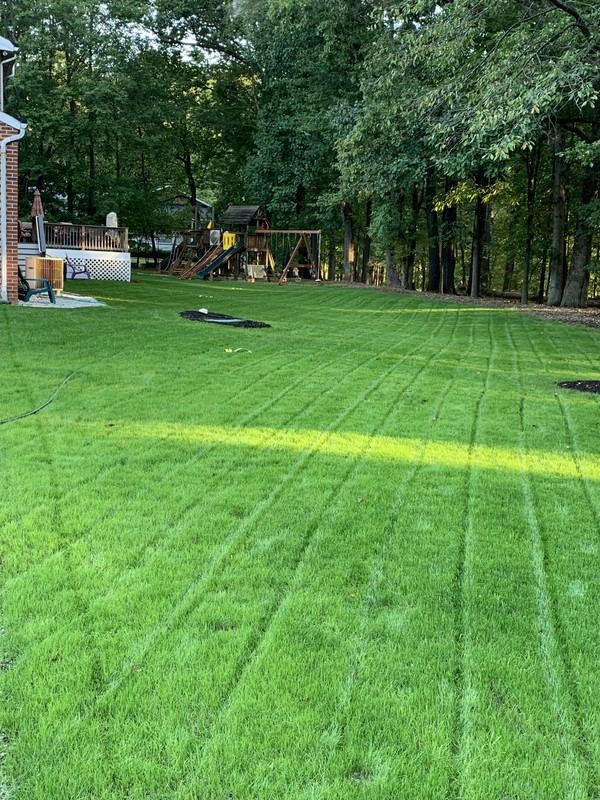
Here are some shots from Day 28-30. Somewhere in here I did another spoon feeding of fertilizer and humic. On Day 30 I used the ZTR, probably a little to soon, but it was fun. This is 2.75".
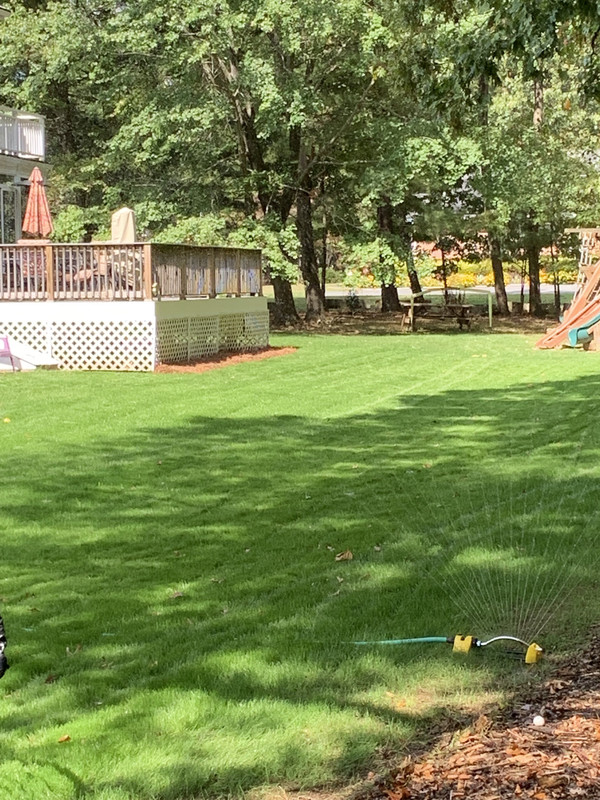

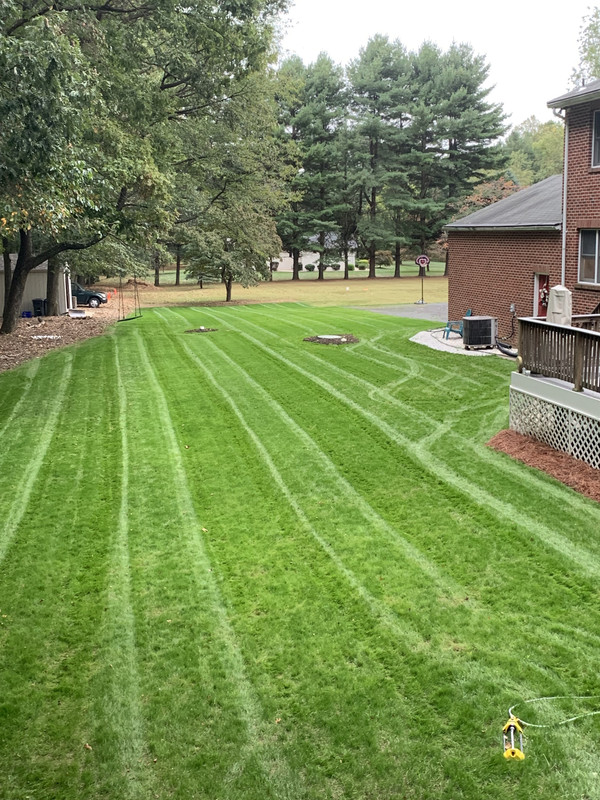
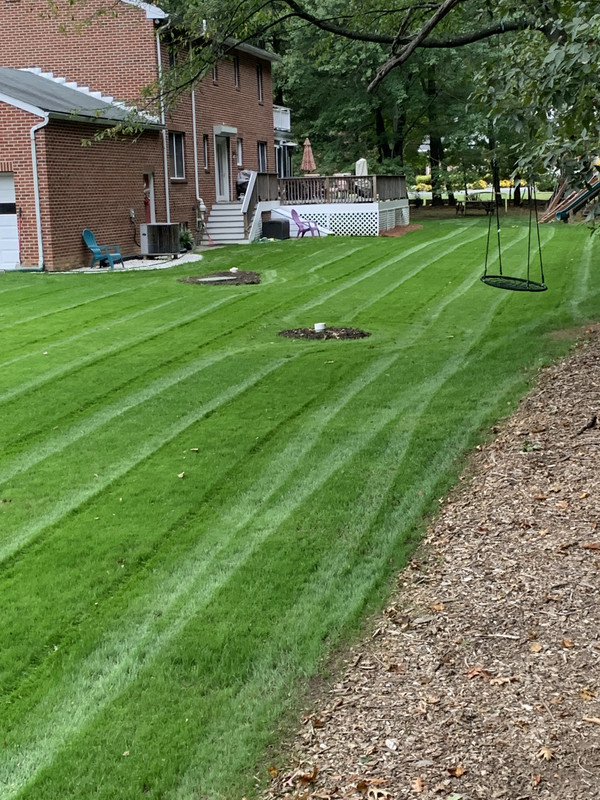
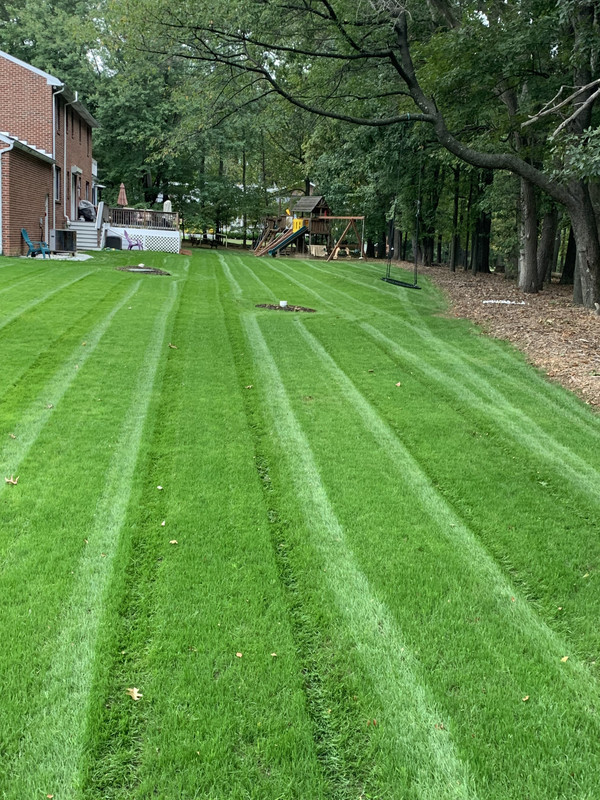
Then I was out of town for another weekend, and when I came back signs of stress were starting to pop up. Highs were still in the 90s the first week of October! By Day 40 - Day 52 some areas suffered substantial damage. I did put down more seed, but by that time the days were getting short, and the most affected areas also happened to be where the house shades the afternoon sun. I am hoping these areas bounce back in the Spring.
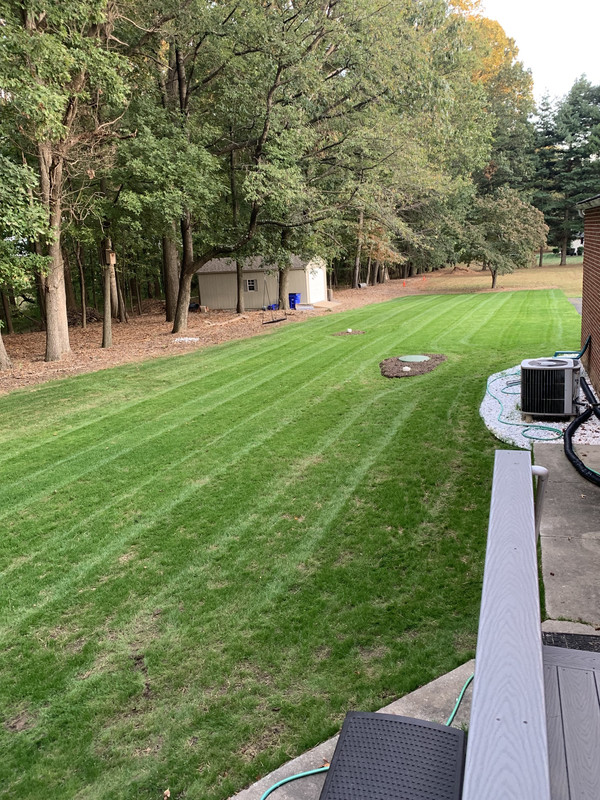
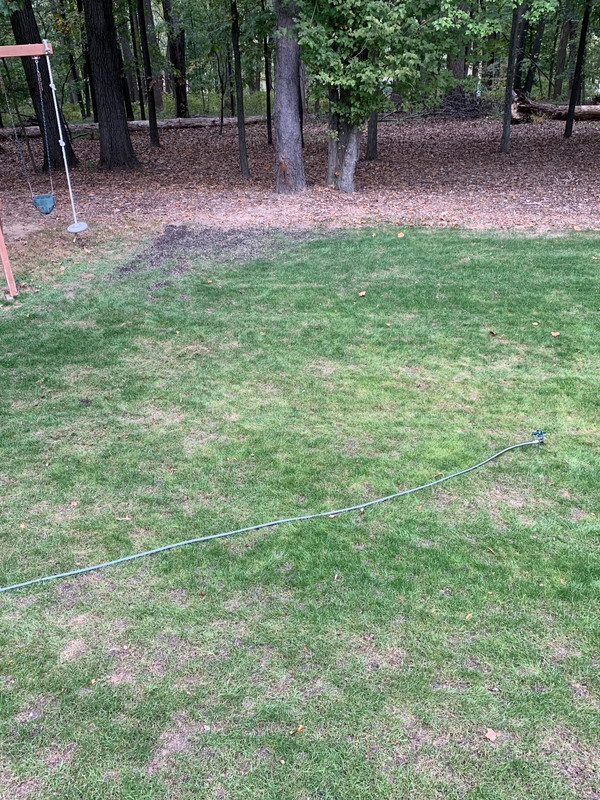
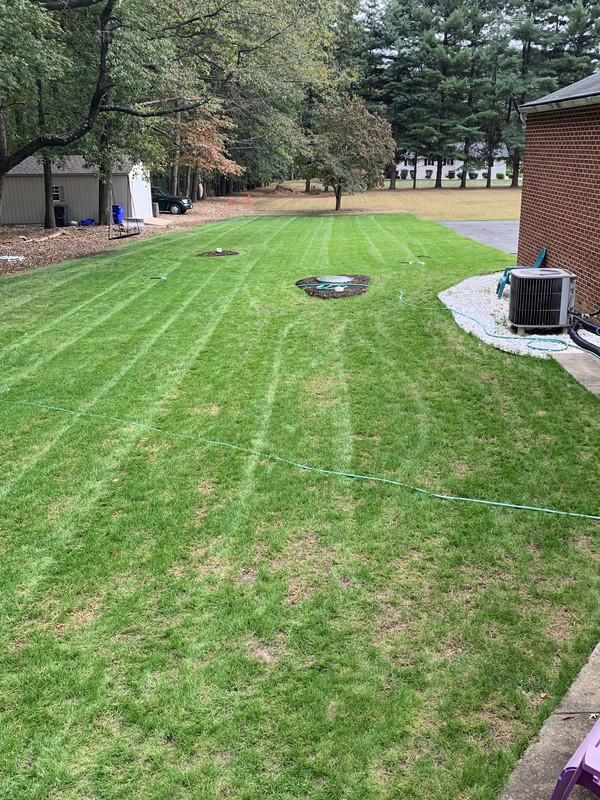
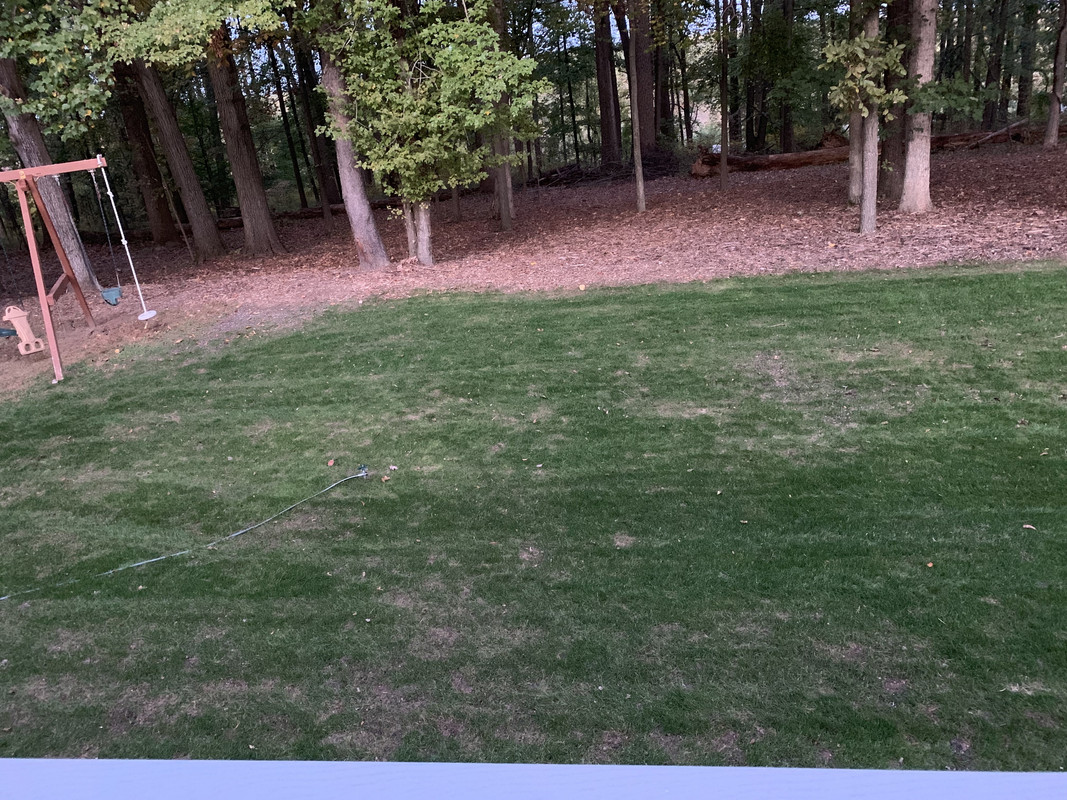
Still, overall I was pleased given the weather we had. Finally, by the end of October the weather turned and the areas without fungus damage were everything I hoped they'd be.
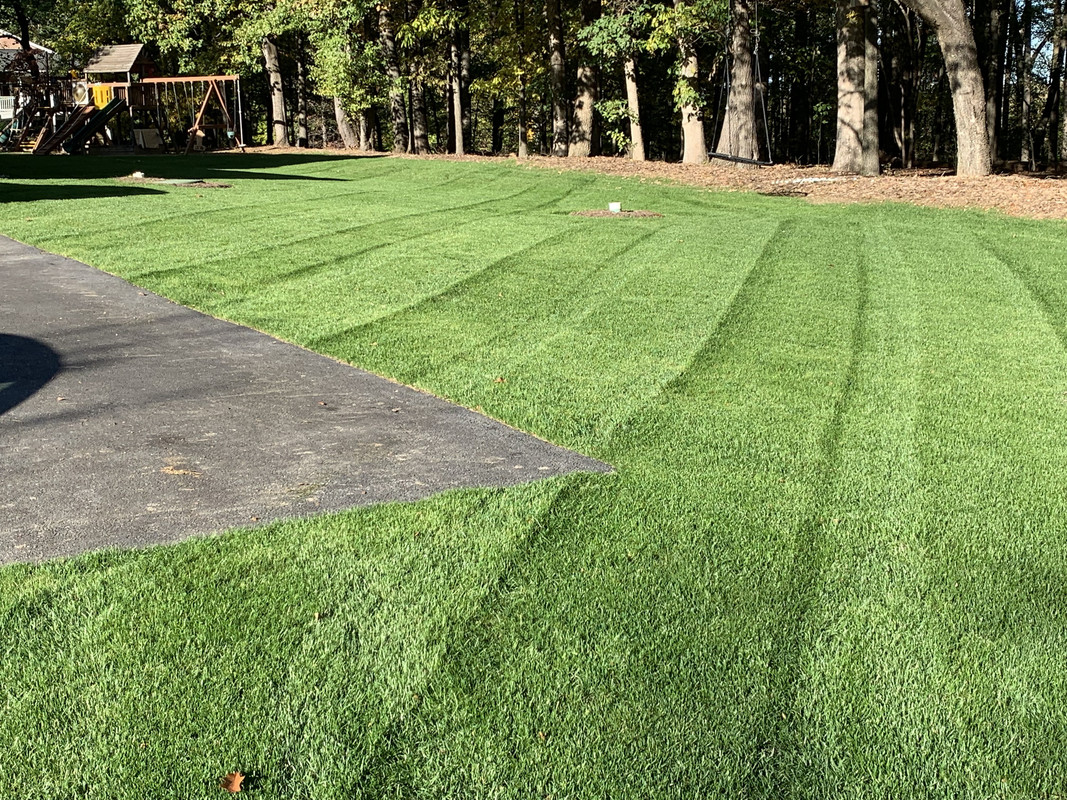
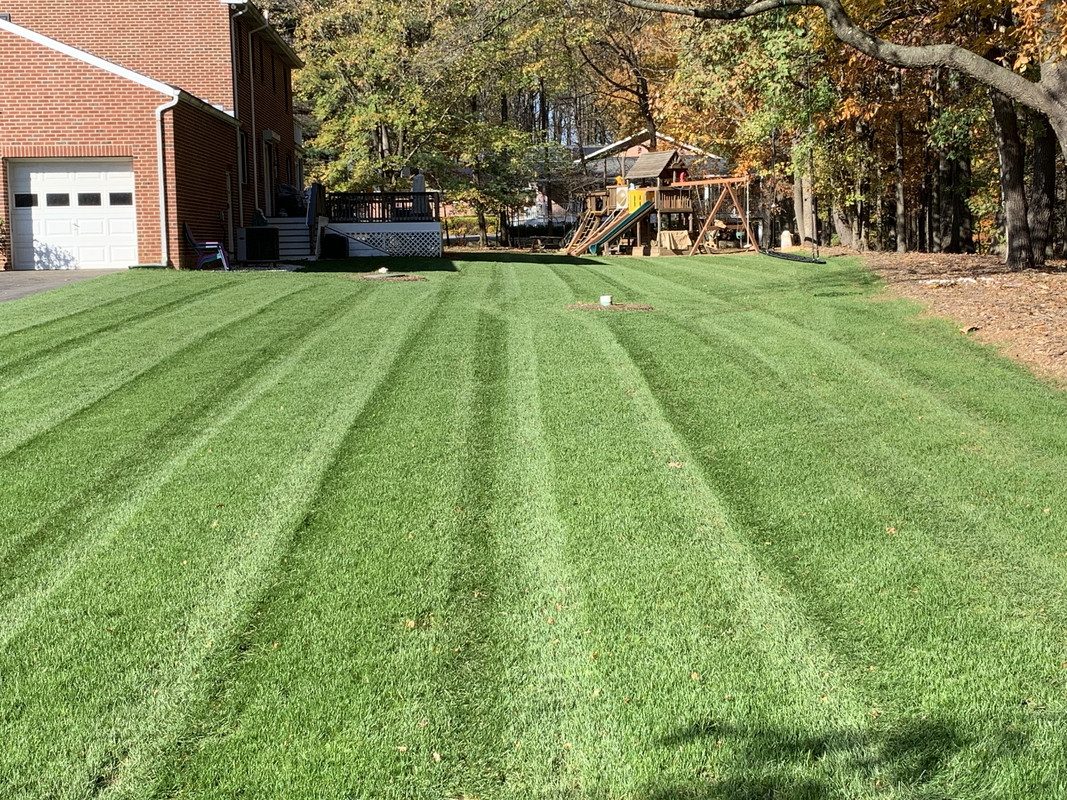
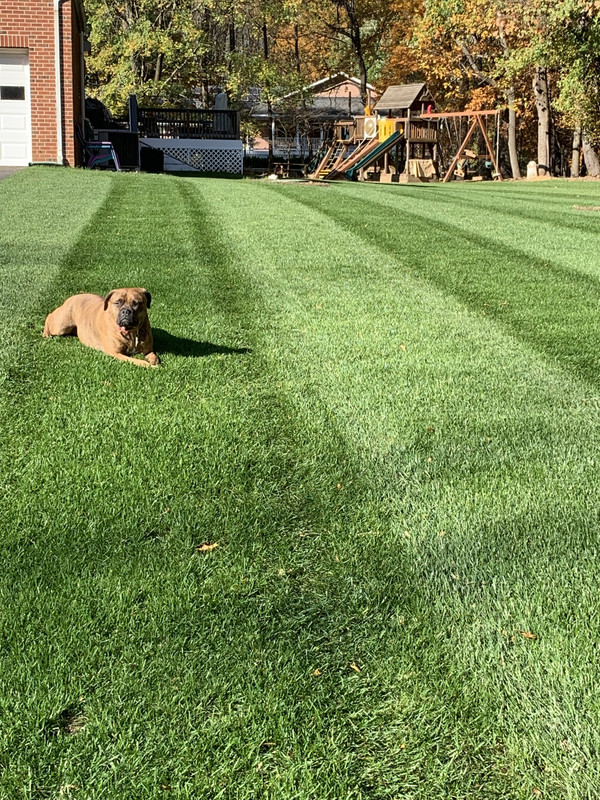
Fin

Granted that's a winter picture, but trust me it was a potpourri of weeds, and exclusively weeds. Here is the after:

The basics: I'm in the transition zone, in a pocket of 6b surrounded by 7a. No irrigation system. For this 10,000 sq. ft. renovation I used Top Choice TTTF from Mountain View Seeds. This year, the varieties were Raptor III, Titanium 2LS, and Valkyrie LS:

The first thing I had to do was address some the grade. This is what it would look like after anything more than a drizzle.

This was my first renovation, so to give myself time to prepare the soil and get used to the routine, I decided to do the grading in the Spring with temporary seed, then kill and renovate in the fall. Grading was hired out and done by a mini excavator. During lunch break I spread lime, 0-46-0, and 0-0-60 per my soil test, along with Milorganite and probably other amendments I'm forgetting. Then the contractor spread 10 yards of compost sourced from the local landfill mixed it in with a power rake.


I recently inherited an old King Quad, so at the end of day 1 I went over everything with a drag mat to smooth it out and pick up what additional rocks I could.


On day 2 my contractor spread Annual Rye and covered with straw - lot's of straw. Within a few days I had baby Rye popping up. By mid-May it was looking pretty good (that side lot is next year's project - also exclusively weeds).



By mid-July it had mostly died off, except closest to the woods where it got a little more shade. So I had a fallow period of roughly 6-8 weeks. I hand picked weeds whenever I could, and sprayed Round-Up once per week.


After several rounds of spot spraying and hand raking (as in, "my family thought I was crazy" several), I had a nice seedbed by the end of August. Also, around that time I rented an aerator, did a few passes, dropped some 10-10-10 and Milorganite, and smoothed it out with the drag mat and more hand raking.

My local extension office recommends seeding between Sept. 15 - Oct. 15, but with my work schedule and family responsibilities I had to settle on Sept. 1. To preview the hell I was in for, here is the weather I had to contend with.


Those are more like August temperatures for my area. On top of that, I opted not to use a fungicide because I inoculated my seed with mycorrhizal fungi and I didn't want to take out the good with the bad. Had I known what was in store I probably would have done a few things differently.
Anyway, I seeded in two directions using my broadcast spreader, then went over it in two directions with a borrowed slit seeder.

I used the max bag rate of 9#/M. I was worried about overcrowding, but with how the weather turned out 9 lb. was probably the perfect rate. For top dressing I used a combination of EZ-straw and Cover Grow, both spread by hand.

September 1 was a Sunday, September 2 was Labor Day, and September 3 I worked from home to tend the sprinklers. Even with a mad scientist setup of hoses, splitters, timers, and a mish-mash of sprinklers, because of the weather it was quite a chore to keep the seed moist. Then I had to be out of town from September 4 - 8! But, the timers and my Dad must have done a pretty good job, because when I got home germination had started (that was day 7).


Day 10


Day 14


Day 16 is where I think I made a mistake. Dissatisfied with some bare spots, I threw down more seed and covered with leftover EZ-Straw. This meant that while I was starting to back off the watering schedule elsewhere, I still had to keep the newly seeded areas constantly moist. I tried to do that mostly by hand watering, but between the weather and work I had to use some timers too. That prevented established areas from drying completely. It didn't show up right away, but I'm convinced the additional seeding contributed to some fungus damage later on.


My first mow was on Day 20, and things were looking really good. After the mow I put down 0.2#/M of 18-24-12 (50% slow release) and some Milorganite at a rate I can't recall and didn't document. I also put down 1#/M Monty's Dri-Carbon granular humic acid. That's significantly higher than the bag rate, and that stuff ain't cheap, but I didn't think I could spread any lesser amount evenly with the tools I have (i.e., no sprayer).


And on Day 23 it looked almost picturesque.


Here are some shots from Day 28-30. Somewhere in here I did another spoon feeding of fertilizer and humic. On Day 30 I used the ZTR, probably a little to soon, but it was fun. This is 2.75".





Then I was out of town for another weekend, and when I came back signs of stress were starting to pop up. Highs were still in the 90s the first week of October! By Day 40 - Day 52 some areas suffered substantial damage. I did put down more seed, but by that time the days were getting short, and the most affected areas also happened to be where the house shades the afternoon sun. I am hoping these areas bounce back in the Spring.




Still, overall I was pleased given the weather we had. Finally, by the end of October the weather turned and the areas without fungus damage were everything I hoped they'd be.



Fin




